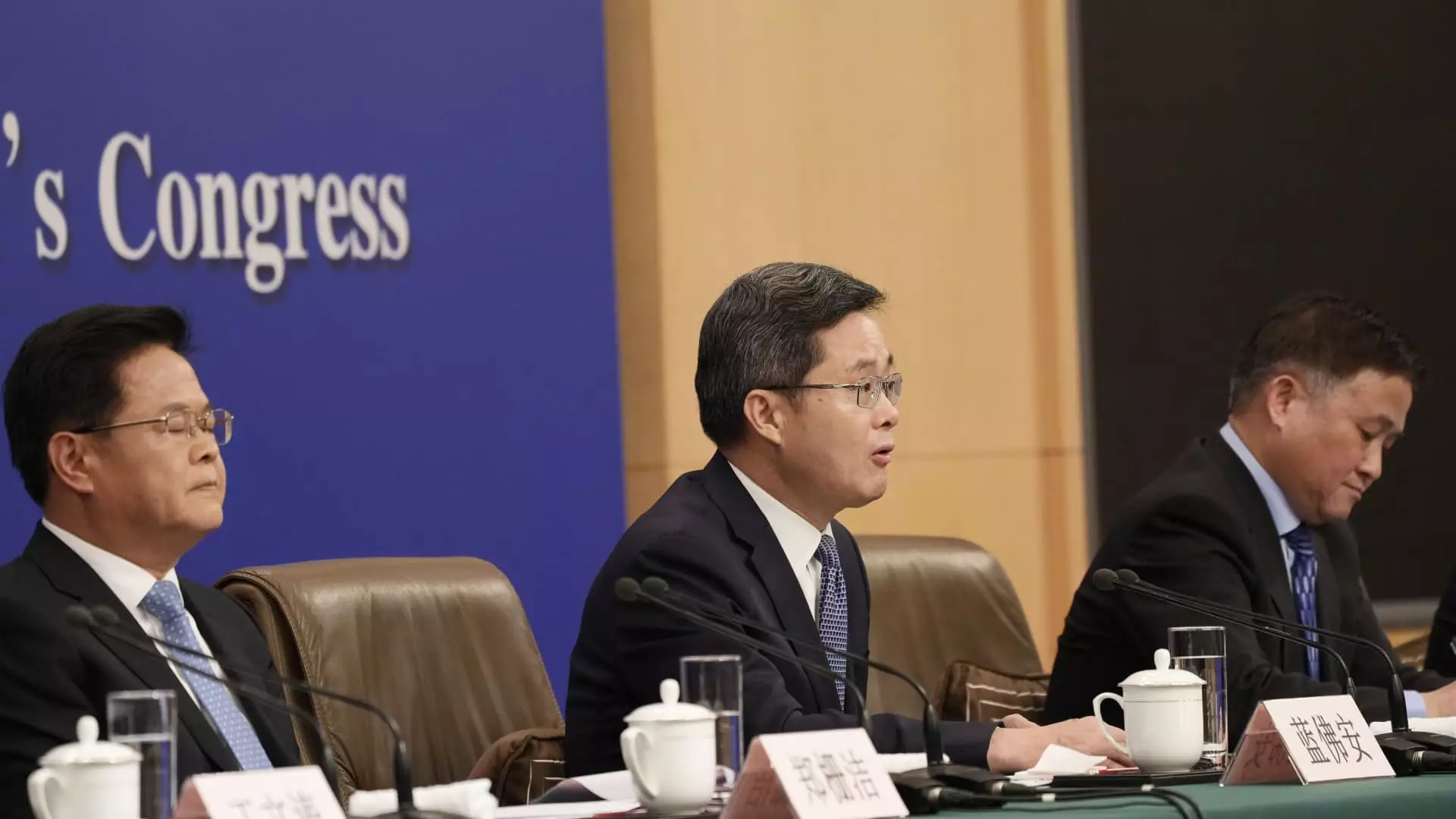China’s financial landscape is poised for a significant moment this Saturday when Minister of Finance Lan Fo’an addresses the public in a highly anticipated press conference. The event has sparked considerable speculation regarding new fiscal measures aimed at bolstering the nation’s economy. In recent discourse among economists, there has been a chorus of voices advocating for enhanced fiscal support—an acknowledgment of the challenges currently facing China’s economy. However, despite the urgency of the situation, no concrete announcements have yet materialized from Beijing.
A September meeting presided over by President Xi Jinping highlighted a call for increased monetary and fiscal support. This suggests an awareness of the pressing economic headwinds; yet, the absence of specific strategies in those discussions raises eyebrows. Analysts are unanimously concerned about the fiscal requirements necessary to stabilize the economy, with estimates fluctuating dramatically between 2 trillion and over 10 trillion yuan. This broad range reflects both the gravity of the situation and the uncertainty surrounding the government’s capacity to act decisively.
Ting Lu, chief China economist at Nomura, underscores a critical point: the approval of any substantial fiscal stimulus will likely require parliamentary consent during an upcoming session later this month. This procedural hurdle cannot be overstated, as it could delay much-needed support at a time when the economy teeters on the brink of stagnation. Moreover, the significance lies not merely in the amount of the stimulus but in how the funds are allocated. There is much debate among analysts about whether any released funds would concentrate on fortifying local government finances or whether they would provide a meaningful boost to consumer spending.
In this context, China’s retail sales data offers concerning insights. Recent months have demonstrated only modest growth, which indicates that consumer confidence remains shaky. Compounding the issue is the ongoing real estate slump that shows little sign of recovery. To make matters worse, economic growth in terms of GDP only reached 5% in the first half of the year, leading to concerns that China might fall short of its stated growth target of approximately 5% for the full year. With the National Bureau of Statistics preparing to release the third-quarter GDP figures on October 18, the suspense surrounding the nation’s economic performance intensifies.
The financial markets reacted vibrantly following the recent holiday, but that enthusiasm ebbed away amid fluctuations. After an impressive week where mainland Chinese stocks rallied post-policy announcements, the optimism seems to have dissipated. The CSI 300 index, after experiencing its most encouraging week since 2008, finds itself back at levels that echo those from late September. This might suggest that while markets might momentarily reflect confidence in government interventions, such assurance remains fragile.
Adding to the complications, the recent actions from the People’s Bank of China—influenced by a global wave of easing policies—demonstrate a responsive, albeit cautious, approach. Following a rate cut, the central bank extended real estate support measures and initiated a substantial borrowing program for institutional investors aimed at stock investments. This move could be seen as an effort to instill confidence in an uncertain market.
Furthermore, the National Development and Reform Commission (NDRC) made headlines by promising to expedite the utilization of 200 billion yuan earmarked for investments. However, this pivot was accompanied by an absence of new stimulus announcements, leading many to speculate about the effectiveness of the current strategies.
Saturday’s press conference presents an opportunity for the government to clarify its stance and outline a coherent strategy to address the mounting economic challenges. With public and market expectations mounting, the potential for misalignment between announced policies and actual implementation could lead to further instability. Should the government fail to respond effectively, the risk of a prolonged economic downturn looms large.
China’s economic future hangs precariously in the balance as key decision-makers prepare to unveil their plans amid a challenging landscape. The time for decisive action is now, and how officials respond to the dual challenges of consumer confidence and real estate recovery could set the tone for the nation’s economic trajectory in the months to come.

